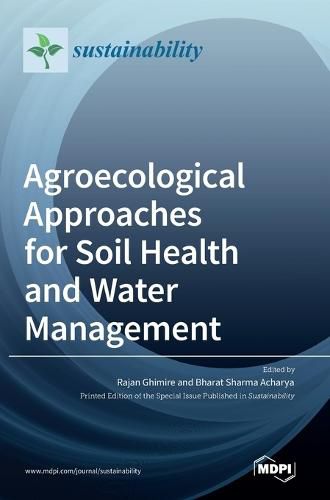Readings Newsletter
Become a Readings Member to make your shopping experience even easier.
Sign in or sign up for free!
You’re not far away from qualifying for FREE standard shipping within Australia
You’ve qualified for FREE standard shipping within Australia
The cart is loading…






This title is printed to order. This book may have been self-published. If so, we cannot guarantee the quality of the content. In the main most books will have gone through the editing process however some may not. We therefore suggest that you be aware of this before ordering this book. If in doubt check either the author or publisher’s details as we are unable to accept any returns unless they are faulty. Please contact us if you have any questions.
In the last century, innovations in agricultural technologies centered on maximizing food production to feed the growing population have contributed to significant changes in agroecosystem processes, including carbon, nutrients, and water cycling. There are growing concerns regarding soil fertility depletion, soil carbon loss, greenhouse gas emissions, irrigational water scarcity, and water pollution, affecting soil health, agricultural productivity, systems sustainability, and environmental quality. Soils provide the foundation for food production, soil water and nutrient cycling, and soil biological activities. Therefore, an improved understanding of biochemical pathways of soil organic matter and nutrient cycling, microbial community involved in regulating soil health, and soil processes associated with water flow and retention in soil profile helps design better agricultural systems and ultimately support plant growth and productivity. This book, Agroecological Approaches in Soil and Water Management, presents a collection of original research and review papers studying physical, chemical, and biological processes in soils and discusses multiple ecosystem services, including carbon sequestration, nutrients and water cycling, greenhouse gas emissions, and agro-environmental sustainability. We covered tillage, nutrients, irrigation, amendments, crop rotations, crop residue management practices for improving soil health, soil C and nutrient cycling, greenhouse gas emissions, soil water dynamics, and hydrological processes.
$9.00 standard shipping within Australia
FREE standard shipping within Australia for orders over $100.00
Express & International shipping calculated at checkout
This title is printed to order. This book may have been self-published. If so, we cannot guarantee the quality of the content. In the main most books will have gone through the editing process however some may not. We therefore suggest that you be aware of this before ordering this book. If in doubt check either the author or publisher’s details as we are unable to accept any returns unless they are faulty. Please contact us if you have any questions.
In the last century, innovations in agricultural technologies centered on maximizing food production to feed the growing population have contributed to significant changes in agroecosystem processes, including carbon, nutrients, and water cycling. There are growing concerns regarding soil fertility depletion, soil carbon loss, greenhouse gas emissions, irrigational water scarcity, and water pollution, affecting soil health, agricultural productivity, systems sustainability, and environmental quality. Soils provide the foundation for food production, soil water and nutrient cycling, and soil biological activities. Therefore, an improved understanding of biochemical pathways of soil organic matter and nutrient cycling, microbial community involved in regulating soil health, and soil processes associated with water flow and retention in soil profile helps design better agricultural systems and ultimately support plant growth and productivity. This book, Agroecological Approaches in Soil and Water Management, presents a collection of original research and review papers studying physical, chemical, and biological processes in soils and discusses multiple ecosystem services, including carbon sequestration, nutrients and water cycling, greenhouse gas emissions, and agro-environmental sustainability. We covered tillage, nutrients, irrigation, amendments, crop rotations, crop residue management practices for improving soil health, soil C and nutrient cycling, greenhouse gas emissions, soil water dynamics, and hydrological processes.